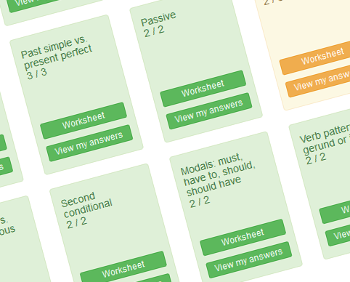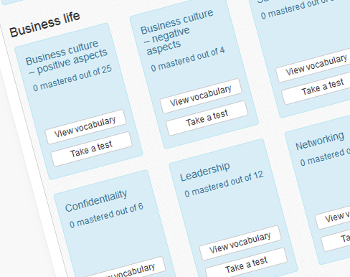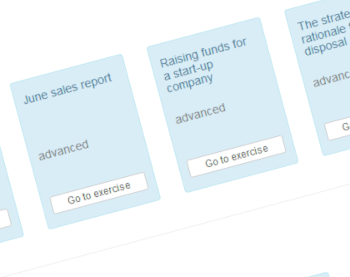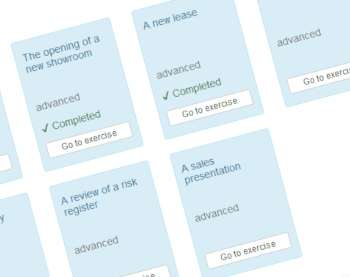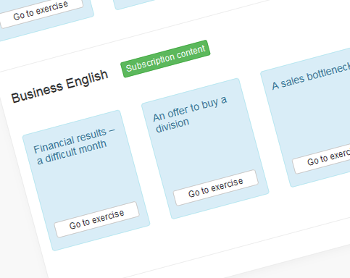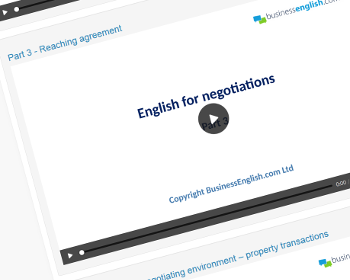El estilo indirecto
(Indirect speech)
Introducción
Se usa el estilo indirecto para informar sobre lo que alguien dijo:- Clara: "I’m tired." (estilo directo)
- Sonia: Clara said that she was tired. (estilo indirecto)
- Peter: She said "I’m hungry".
o se puede usar el estilo indirecto:
- Peter: She said that she was hungry.
Form
Cuando se usa el estilo indirecto, el verbo principal de la frase o "reporting verb" se usa por lo general en el pasado:- He said ...
- She told me ...
- They asked ...
| direct speech | indirect speech | |
|---|---|---|
| "I'm going to the park." | ➞ | She said that she was going to the park. |
| "You must report to the manager." | ➞ | He told me that I had to report to the manager. |
| "We will do it." | ➞ | They said that they would do it. |
| "Ana can swim very well." | ➞ | I said that Ana could swim very well. |
El pasado simple en estilo directo puede dejarse igual como pasado simple cuando se usa el estilo indirecto o se puede cambiar al pasado perfecto:
| estilo directo | estilo indirecto | |
|---|---|---|
| "I arrived late, so they sacked me." | ➞ |
He said that he arrived late, so they sacked him.
He said that he had arrived late, so they had sacked him. |
Cuando se usa el estilo indirecto se puede omitir la palabra "that":
- I said that she should have seen a doctor.
- I said she should have seen a doctor.
Práctica 1
Complete el estilo indirecto cambiando el tiempo verbal del verbo del estilo directo:
.Cuando se usa el estilo indirecto, se debe recordar cambiar los pronombres del sujeto y objeto:
| estilo directo | estilo indirecto | |
|---|---|---|
| "I'm late for work." | ➞ | April said that she was late for work. |
| "I will give you the box." | ➞ | Tom said that he would give me the box. |
También hay que cambiar los adverbios y locuciones adverbiales de tiempo y lugar:
| estilo directo | estilo indirecto | |
|---|---|---|
| "We will arrive tomorrow." | ➞ | They said they would arrive the next day. |
| "The diary is here in my office." | ➞ | He told me that the diary was there in his office. |
Práctica 2
Complete el estilo indirecto con los pronombres correctos:
.Si la situación de la que se está informando sigue siendo cierta en el momento de hablar, entonces no es necesario cambiar el tiempo verbal en el estilo indirecto:
| estilo directo | estilo indirecto | |
|---|---|---|
| "I love my new house!" | ➞ |
Mary said that she loves her new house.
(Eso sigue siendo cierto puesto que a ella aún le gusta mucho su casa.) |
Pero también es correcto cambiar el tiempo verbal:
| estilo directo | estilo indirecto | |
|---|---|---|
| "I love my new house!" | ➞ | Mary said that she loved her new house. |
Debe cambiar el tiempo verbal en las siguientes situaciones:
- La situación de la que se informa ha cambiado o ha terminado;
Rose said that she was going to New York.
(No "is going" porque ella está allí ahora mismo.)
- Lo que se dijo y lo que es verdad son diferentes;
She told me she would tell him.
(No se usa "will tell", porque o ella no se lo dijo o no sabemos si ella se lo dijo.)
Cuando se habla sobre pedidos, órdenes o peticiones se usa"tell" o "ask" y el infinitivo con "to":
| estilo directo | estilo indirecto | |
|---|---|---|
| "Close the door." | ➞ | She told me to close the door. |
| "Please, give me the key." | ➞ | He asked me to give him the key. |
Say or tell?
"Tell" necesita un complemento directo:
- Paul told me he was retiring.
- I told him to be quiet.
- We told the teacher that he was wrong.
- Mary said that she was leaving.
- I said she was very noisy.
- They said that the house was very old.
Más práctica
.Create a free Getting Started account
Enlaces relacionados
En los siguientes ejercicios figura el uso de esta estructura gramatical:
También podría interesarle:
- Ejercicios de vocabulario de inglés de negocios
- Lectura Cuenta Pro
- Scenario-based dictation exercises – business English Cuenta Pro
También podría interesarle:
Principiantes
- Pasado simple
- Pasado continuo
- Presente simple
- Presente continuo (presente)
- El presente perfecto
- Los dos futuros “going to” y “will”
- Presente continuo (futuro)
- El imperativo
- Ser o estar “to be”
- Pronombres: sujeto, objeto
- Pronombres: relativos
- Adjetivos y pronombres posesivos
- Adjetivos y pronombres demostrativos
- Lugar básico de los adjetivos
- Preguntas que empiezan con WH (pronombres interrogativos)
- Los artículos: “a, an, the”
- Las preposiciones de tiempo y lugar
- “There is"/"there are” y los cuantificadores
- Las conjunciones “and","or", "but”
- Los comparativos/superlativos (than)
- El condicional cero “if”
- Primer condicional (if)
- Los verbos modales: “can" / "can´t", "could", "will", "shall”
- Patrones de verbos
- Sequence adverbs
Intermedio
- El pasado perfecto
- El pasado simple vs presente perfecto
- El pasado simple vs pasado continuo
- El presente perfecto continuo
- El futuro simple
- El futuro continuo
- La voz pasiva
- El estilo indirecto
- “Used to" / "would”
- El segundo conditional
- El tercer condicional
- Las oraciones de relativo
- Los pronombres reflexivos
- Los verbos modales: must, have to, should, should have
- Patrones verbales: gerundio o infinitivo
- Los adverbios de grado
- El orden de los adjetivos
- Adjetivos acabados en “ed” o “ing”
Gramática
Identifique rápidamente y concéntrese en los problemas de gramática:
- Hojas de actividades y examen de gramática
- Scenario-based grammar exercises
- Grammar additional practice questions
- Práctica de conjugación verbal
- Práctica de los condicionales
Mejore su gramática
Vocabulario
Vocabulary exercises:Amplíe su vocabulario utilizando nuestros tres profesores de vocabulario:
- Práctica de vocabulario de inglés general
- Práctica de vocabulario de inglés de negocios
- Práctica de giros idiomáticos
Aprenda vocabulario
Ejercicios de dictado
Practique sus habilidades de escucha y escritura utilizando nuestros ejercicios de dictado:
- Scenario-based dictation exercises - general English
- Scenario-based dictation exercises - business English
- Dictado: profundizando en la gramática
- Números
Complete los ejercicios de dictado
Lecciones en video
Concéntrese en áreas concretas dentro del inglés de negocios utilizando nuestras lecciones en video:
Reciba una lección por vídeo
